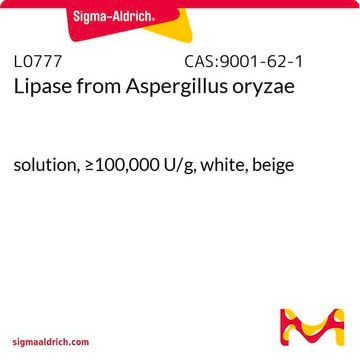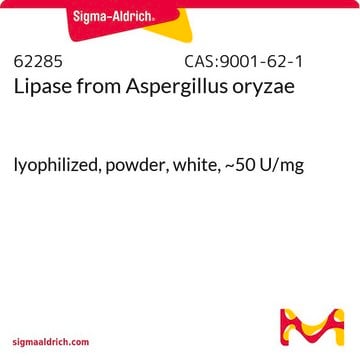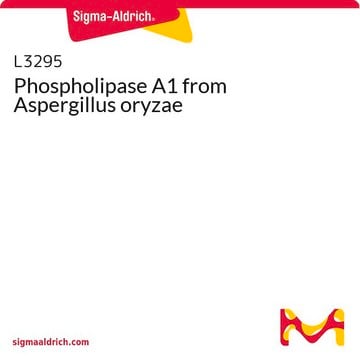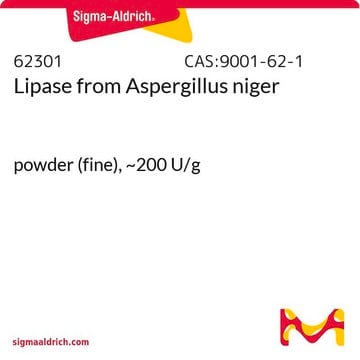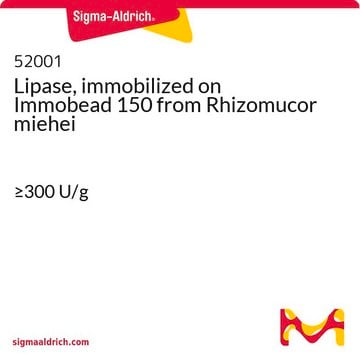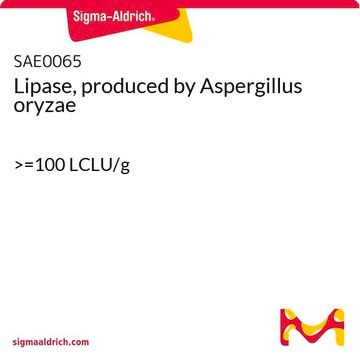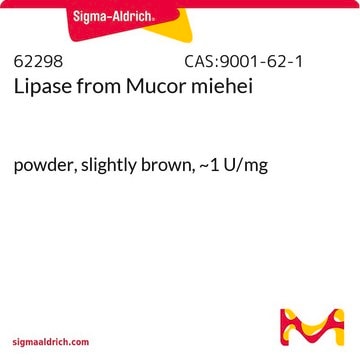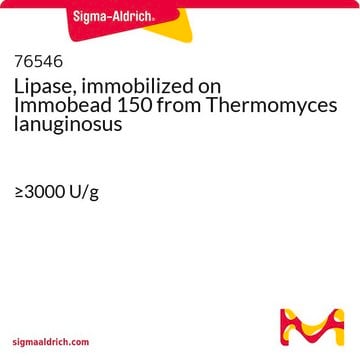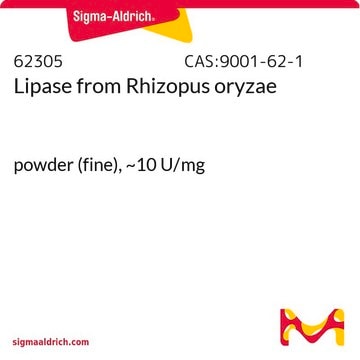L4277
Lipase from Aspergillus oryzae
≥20,000 U/g
Sinónimos:
Palatase® 20,000L
About This Item
Productos recomendados
formulario
lyophilized
actividad específica
≥20,000 U/g
temp. de almacenamiento
2-8°C
InChI
1S/C11H9N3O2.Na/c15-8-4-5-9(10(16)7-8)13-14-11-3-1-2-6-12-11;/h1-7,16H,(H,12,14);/q;+1/b13-9-;
Clave InChI
QWZUIMCIEOCSJF-CHHCPSLASA-N
Descripción general
Aplicación
- in the partial digestion of triacylglycerols (TAG)
- in the digestion of (12-ricinoleoylricinoleoyl)diricinoleoylglycerol (RRRR) present in castor oil
- in the hydrolysis of linseed oil
Acciones bioquímicas o fisiológicas
Nota de preparación
Información legal
Palabra de señalización
Danger
Frases de peligro
Consejos de prudencia
Clasificaciones de peligro
Resp. Sens. 1
Código de clase de almacenamiento
11 - Combustible Solids
Clase de riesgo para el agua (WGK)
WGK 1
Punto de inflamabilidad (°F)
Not applicable
Punto de inflamabilidad (°C)
Not applicable
Equipo de protección personal
Eyeshields, Gloves, type N95 (US)
Certificados de análisis (COA)
Busque Certificados de análisis (COA) introduciendo el número de lote del producto. Los números de lote se encuentran en la etiqueta del producto después de las palabras «Lot» o «Batch»
¿Ya tiene este producto?
Encuentre la documentación para los productos que ha comprado recientemente en la Biblioteca de documentos.
Los clientes también vieron
Nuestro equipo de científicos tiene experiencia en todas las áreas de investigación: Ciencias de la vida, Ciencia de los materiales, Síntesis química, Cromatografía, Analítica y muchas otras.
Póngase en contacto con el Servicio técnico